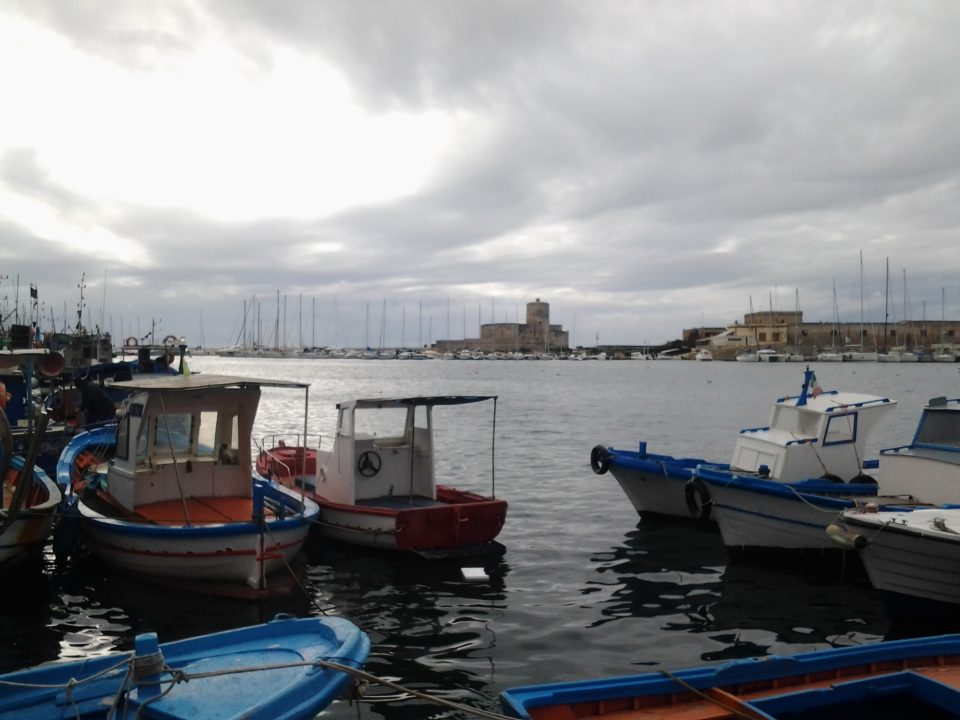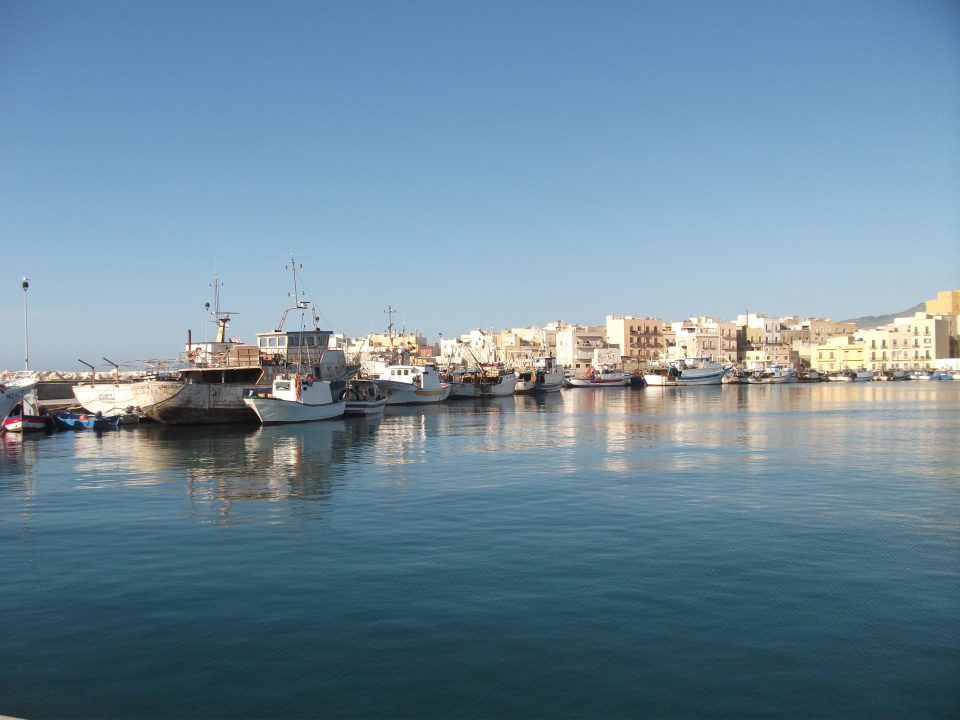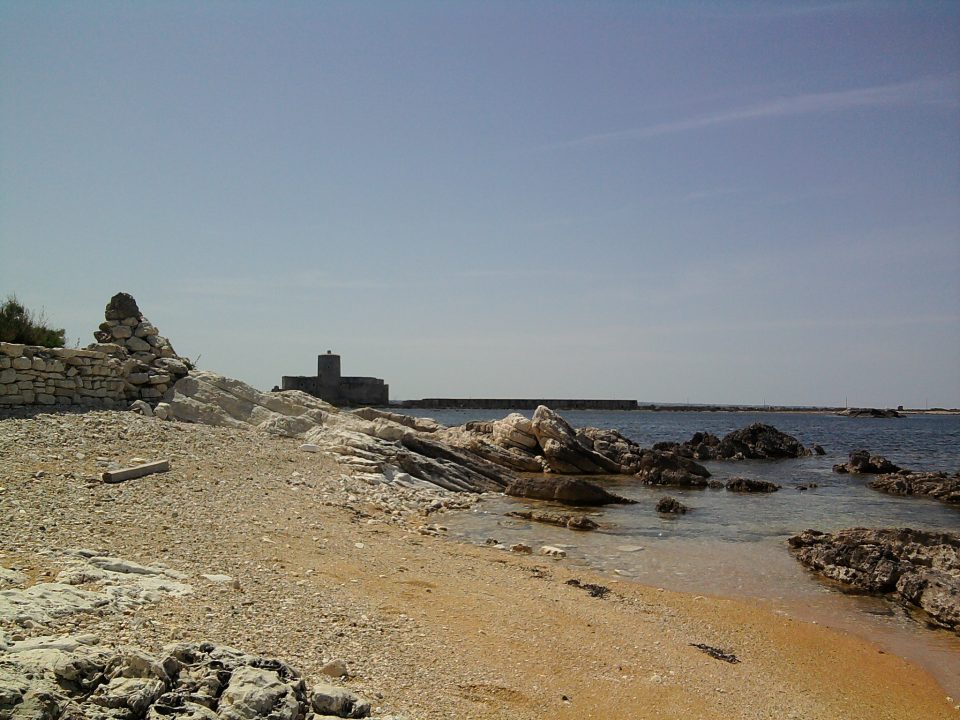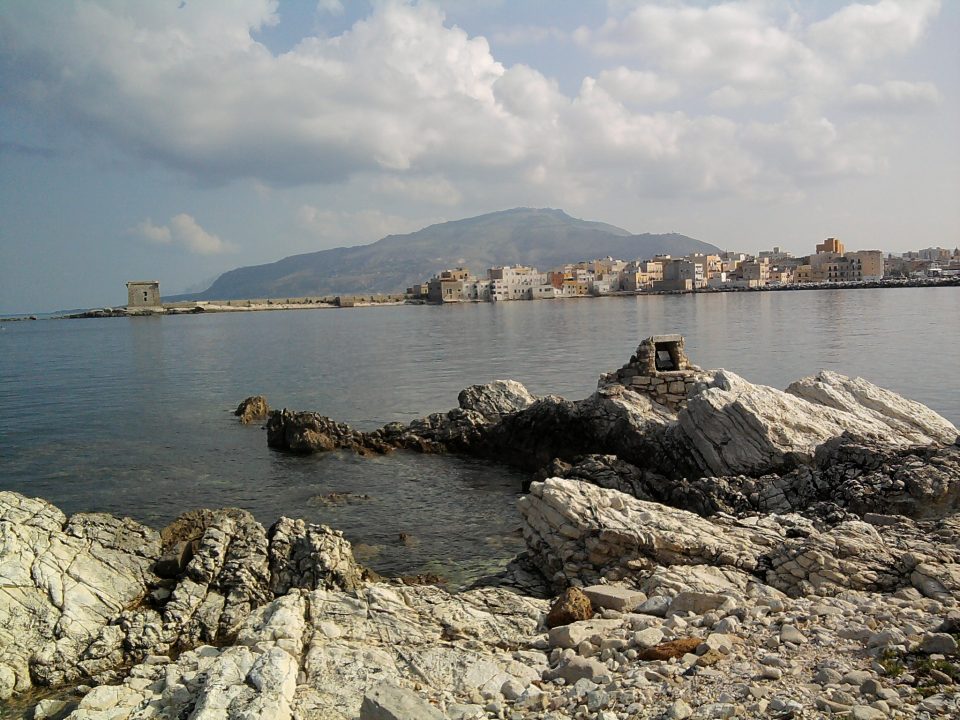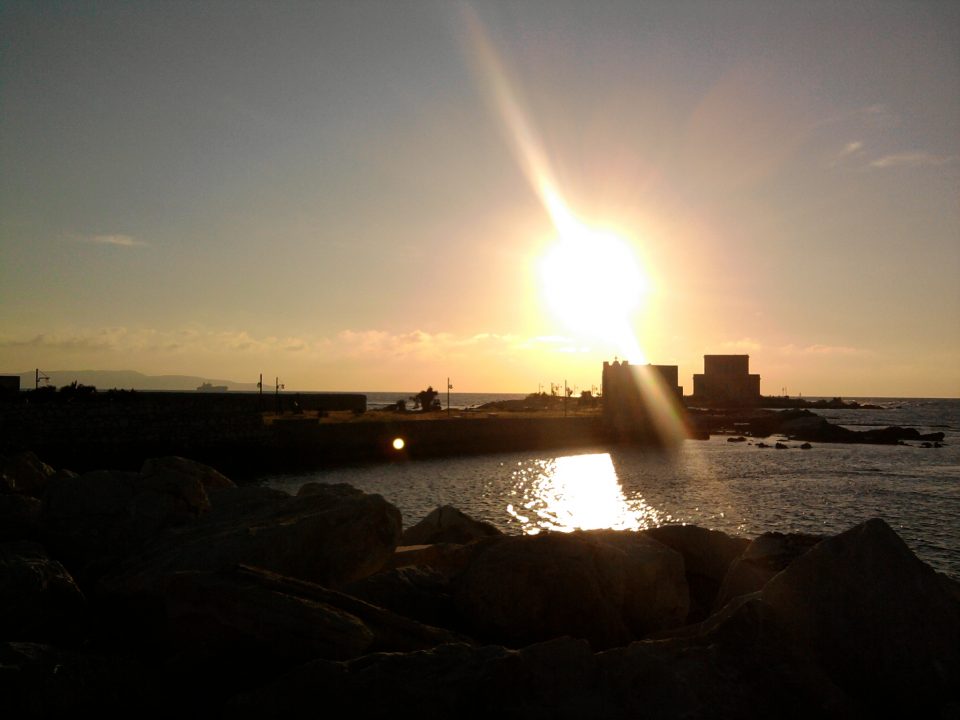Lazzaretto and Villa Nasi at the end of the port, in the most western side of Sicily
Since we want to reach the most western side of Sicily, we are walking straight on the port of Trapani up to Villa Nasi.
Port of Trapani
The port is the heart of the city along which the history of the town developed over the centuries. Many tourists waiting for ferries to the Egadi islands and Pantelleria make the port a busy place.
In recent years, the Mediterranean Sea is considered the centre of international maritime traffic. Because of that Trapani can be considered “in the middle of the centre”, thanks to an equidistant position from the Suez Canal and the Strait of Gibraltar.
From the port of Trapani, thousands of passengers pass through the Egadi Islands, Pantelleria, the North African coasts, and the localities of Western Sicily. There is the main bus stop to popular localities such as San Vito lo Capo.
In addition the Port of Trapani is also an ideal place to accommodate yachts of different typology and size.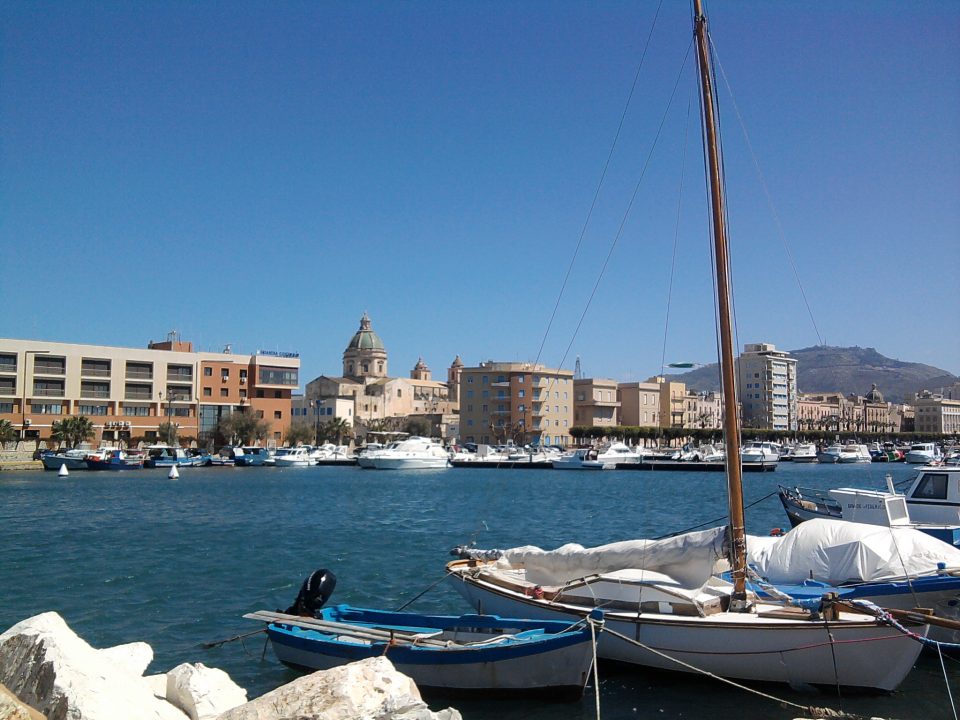
Looks like the town was reborn under the domination of the Arabs, who began their occupation of Sicily in 827. They called Trapani Itrabinis or Tarabanis, very similar to the current name. Arabs enlarged the port and brought it back to its original importance. They built new discricts and hydraulic-engineering works. They also introduced new fishing techniques.
The statue of Maria Stella Maris
So, at the end of viale Regina Elena, we see the statue of “Madonna protettrice del Mediterraneo”.
It was once placed on top of an obelisk at the entrance of the port from the sea, probably on Ronciglio pier.
Due to the works of extention of the port, about ten years ago, it was moved at the end of the street.
It is located within the Columbus Yachting Trapani area, which offers Yachts and sailboat mooring services.
The fishing port of Trapani
Furthermore, turning right and then left, we reach the fishing port. Fishing is one of the basic economic activities in Trapani. At mornings it houses the fresh fish market, a place very loved by tourists.
The lazzaretto
Walking on, the road on the left leads to a circular building looking over the sea. A climb looking like a bridge makes the access possible. Once it was a bridge, but now there is no water under it. The bridge linked the little Saint Antony island to the mainland. Now the isle is united to the mainland.
In the first half of the XIII century there was a church, Saint Antony of the Sea, which hosted, for the quarantine period, crews and people from ships suspected of carrying out epidemics. Then in 1838 it was rebuilt as a hospice for the people sick of cholera, and then was used for people sick of leprosy.
Finally cleared up, today it is a marine clubhouse. Today it houses the local seat of the Italian Naval League. From above, it looks like a large exedra.
Villino Nasi
Opposite to it, a gate separates us from Villino Nasi, a pretty rustic ashlar villino built on the rock called Palumbo.
So far we are lucky. Usually closed, it is open now because a couple of newlyweds has chosen this place to take their wedding photos.
The place is magical. The salty wind that always breathes here in Trapani is strong and smells of sea.
A white path of stones leads to the small house with a typical rustication. 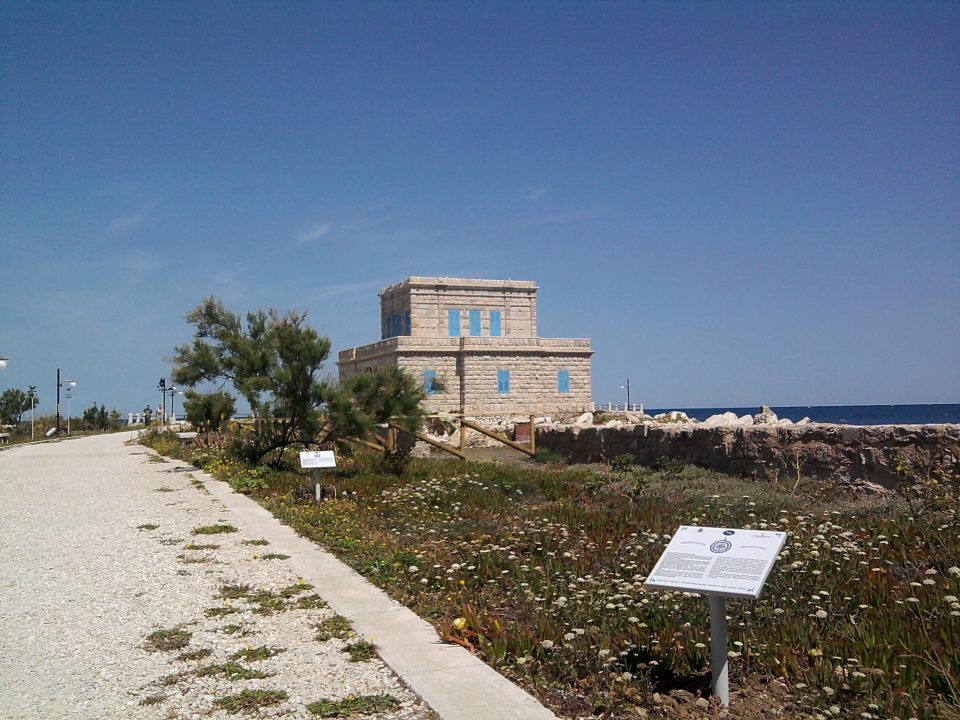
There is also a liberty style Chapel. 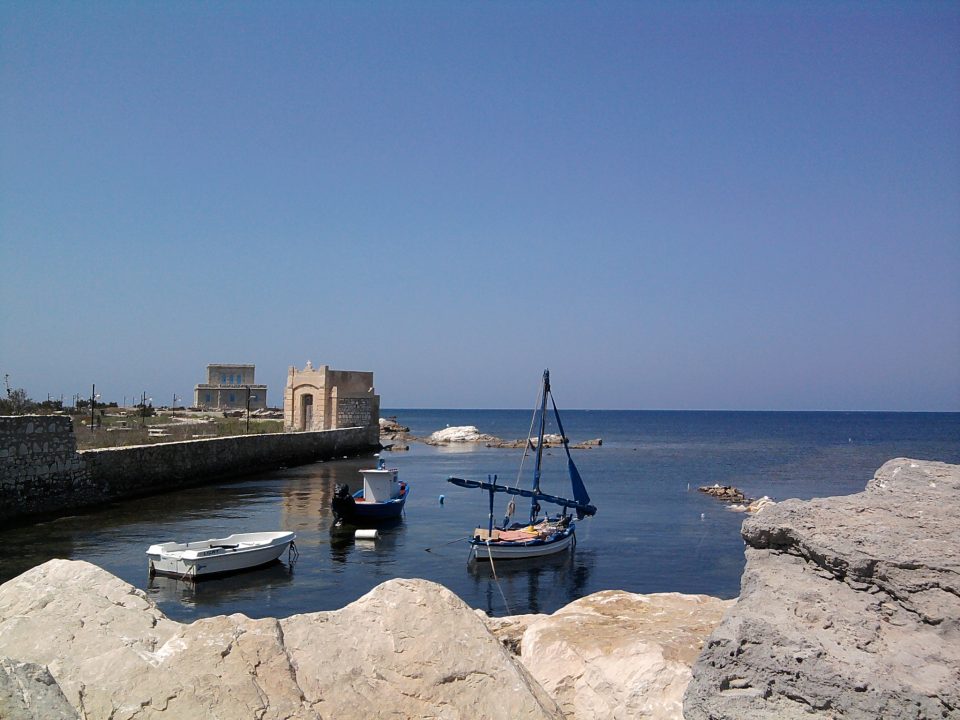
Almost nothing is left of the old fountain in front of villa Nasi.
Unfortunately, though the spouses, the villa is not open to allow a visit inside.
The popular politician Nunzio Nasi, so loved by people, started building this villa in 1898.
I read the interior has antique furniture. Maybe there is a bust of Nasi by Ettore Ximenes, numerous photos and paintings and an old piano. Also some marbles and ceilings that still show the remarkable frescoes of the early 900.
In addition there is a remarkable stone spiral staircase “alla trapanese” leading to the top floor.
The Palumbo rock
First of all, the place attracts us primarily because the beauty of the coast.
The house and the coast look uninhabited for years, but both are in excellent condition.
In fact, along the coasts made of jagged rocks, there is no trace of the usual dirt. Neither algae or abandoned plastic bottles, as we had found instead on the other side towards the lazzaretto. Due of the sea current, some bottles transported by vawes arrive to the calm sea mirror in front of the small island of the Colombaia, and there they remain as trapped.
We love the silence which is wrapping us, broken only by the words of spounses and the photographers, which come to us from afar.
Meanwhile we begin to think whoever built a house so pretty in a rock so magic surely had good taste and love for nature.
A dreamy place
I imagined how it must have been dreamy for him and his family waking up in the summer mornings and diving into the calm sea, because the sea is a few steps from the rear.
Mr.Nasi working at his desk while the fire is burning in cold winter evenings; and the sea in a storm would splash on his windows. Or I just see him discussing politics with colleagues, hopping among the rocks up to the last strip of land. Who knows he told the sea his ambitions?
The view from the villa is great. You can see the Egadi islands and the Colombaia with its lighthouse. Opposite to it, Ligny Tower, and Erice Mount.
There are also some rusty iron residues of the ship that in 1957, in a stormy night, run on the cliff there and unfortunately some people lost their lives.
Villa Nasi is really special and could be better valued, I think!
source:
http://trapaniedintorni.altervista.org
Municipality of Trapani – Town guide
Foto: Maria Virzì
